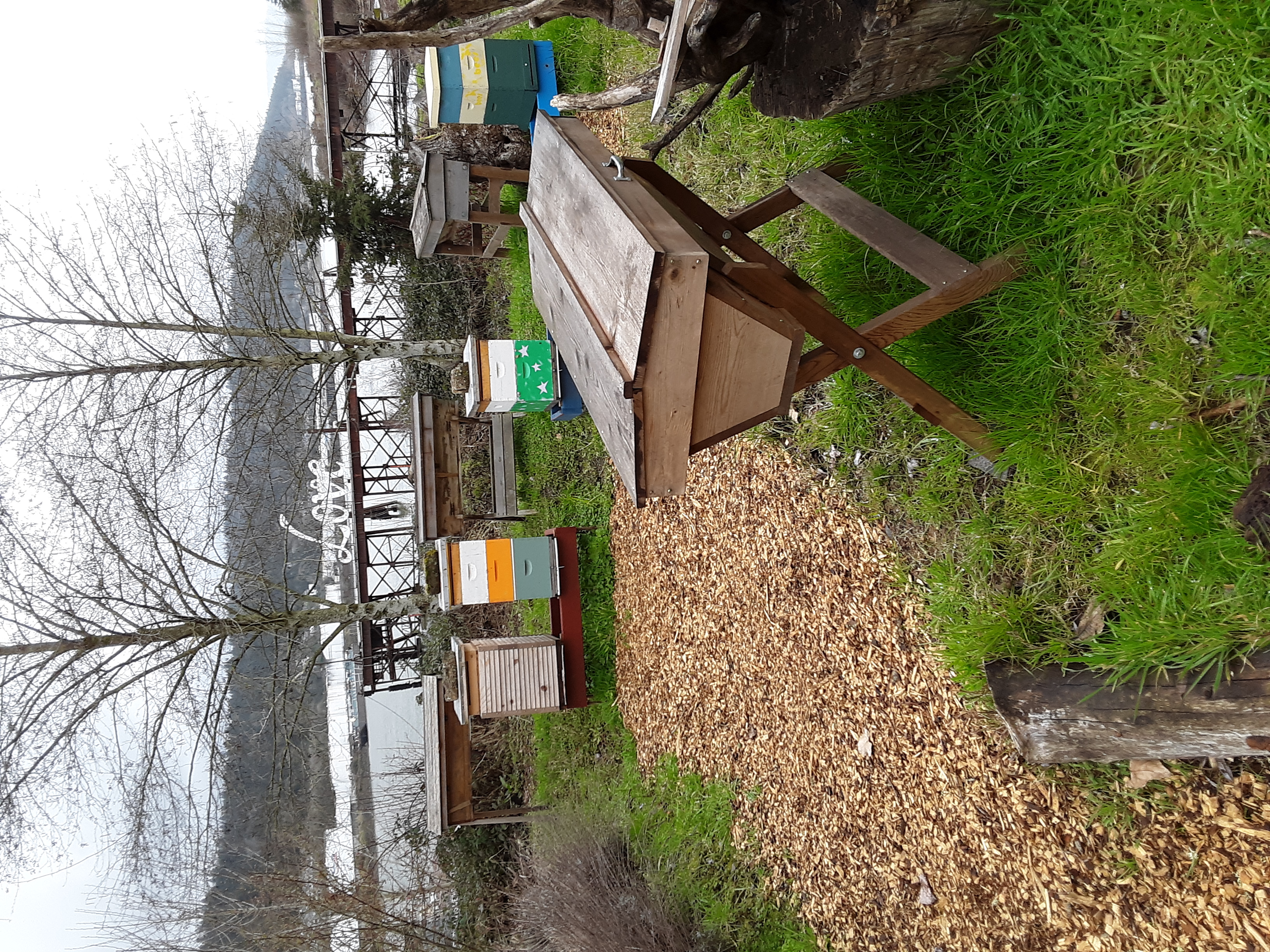Tiny black oval beetles, most often seen when inner cover removed. Larva sliming a portion of the comb of weak colonies. Small hive beetles imprisoned in propolis "corrals" evident on top bars under inner covers. When tops removed, small hive beetle adults might be observed before they scamper below into the hive.
The small hive beetle (SHB) is a scavenger pest of weak bee colonies. Adult beetles fly at night, entering bee colonies when guards are not present or when weaker colonies are insufficiently guarded. The adults lay eggs in cracks or crevices where house-cleaning bees cannot access them. Larvae gather where bees are not patrolling and are protected by a slime that includes fermented honey. The fermented honey and slime has the characteristic odor of decaying oranges. The slime and discoloration may even be seen staining the outside of the hive boxes.
SHB larvae develop in seven to ten days. They feed on the debris and brood of bees. Adult bees are reluctant to remove the slime and larvae, especially if colony is weaker or there is a large amount of comb relative to what the adult bee population can protect.
SHB pupation is outside the hive in the ground. The larvae gather by the hundreds on the bottom board and then leave the hive to enter the soil en masse.
If only a few SHB adults are present, worker bees attempt to corral them in propolis prisons maintained around the nest perimeter, especially on top bars below the inner cover. Bees have even been observed feeding confined SHB adults. Opening a colony will result in disruption of the propolis prisons, leading to the release of the captured SHBs. The released beetles quickly run between frames, as they are negatively phototactic, i.e., they run away from the light.
SHB adults are attracted to pollen patties and even grease patties used for tracheal mite control. Since these protein additives, frequently containing sugar or honey, are commonly used on smaller colonies like mating nuclei, they may quickly become a beetle breeding ground, intensifying the pressure on other colonies in the apiaryapiary:
a place where beehives and beekeeping equipment are located; also called a bee yard. An out-apiary is a site away from the owner’s residence. .
.
Beetle attacks and the slime they produce cause bees to abandon their hive, leaving the comb unprotected. In addition to attacking living colonies, the beetles are also a pest of both stored comb and honey (in the comb) removed from colonies and awaiting extraction. If any frames of honey for extracting contain brood, the deterioration is accelerated.
Although readily distributed with colony movement in packages or for pollination, SHBs are a major problem mainly along the U.S. eastern seaboard. Heavy organic, slowly draining soils, in contrast to lighter sandy soils, deter the SHB life cycle. It is unknown why they have not become a more serious beehive pest in the southwestern U.S. (where soils seemingly would be favorable) or along the west coast.
Control is difficult. Adult trapping can be attempted with inexpensive beetle traps or with floor cleaning pads placed on top bars below the inner cover. Soil treatment with an insecticide will kill pupating beetles. Keeping colonies strong and in hives where adults can adequately patrol the comb surfaces are the major prevention strategies.
scavenger sap beetlesscavenger sap beetles:
a variety of different beetle species that recycle refuse located at the bottom of bee hives
in colony debris
Hill E. 2015. Small Hive Beetle. Mid-Atlantic Apicultural Research and Extension Consortium 4.6. 6 pp. https://canr.udel.edu/maarec/wp-content/uploads/sites/18/2010/05/SMALL_HIVE_BEETLE_FACT_SHEET_1-29.pdf
Ambrose J Tarpy D and Keller J. 2016. The Small Hive Beetle: A Pest of Honey Bees. North Carolina State Extension. Accessed 2023. https://content.ces.ncsu.edu/the-small-hive-beetle-a-pest-of-honey-bee-colonies
Torgerson K, Breece C, Sagili R, and Caron DM. 2016. The Small Hive Beetle: A Potential Pest in Honey Bee Colonies in Oregon. Oregon State Extension EM 9143. Accessed 2023. https://catalog.extension.oregonstate.edu/em9143
Ellis J. 2010. Small Hive Beetle. Featured Creatures. Accessed 2023. https://entnemdept.ufl.edu/creatures/misc/bees/small_hive_beetle.htm